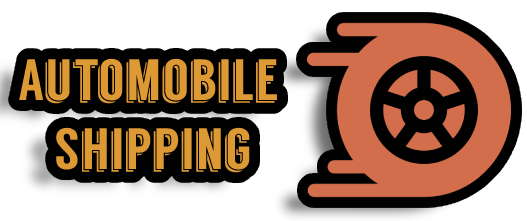Are you thinking of moving your car from USA and transferring it to Canada? Don’t worry! Many people are in this position regardless of whether they’re traveling across the border or simply would like to take their beloved vehicle for the road. However, before you begin the process, you need to have all of the required information available. From understanding the requirements to calculating the cost and obtaining the required documents We’ve got your back with this step-by-step guide to how to move your car from the USA to Canada. Don’t hesitate to buckle up and begin this exciting journey across the border!
How can I move my vehicle from the USA to Canada?
Can I move my vehicle from the USA to Canada? Absolutely! It is possible to drive your US registered vehicle across the border into Canada. However there are some things to think about before you embark on the journey.
The first and most important thing is that you should ensure that your car meets the Canadian emissions and safety standards. Regulations in Canada might differ from those of the USA It’s therefore essential to ensure that your vehicle is in compliance. This may mean making adjustments or getting specific certifications.
Another thing to consider is whether your car has outstanding loans or lien against it. If you have any financial obligations relating to your vehicle you’ll have to settle prior to crossing into Canada along with your vehicle. Always check with your leasing company about their policies regarding transfers across borders.
Be prepared for possible import duties and taxes when you import your car to Canada. The cost of these fees will vary based on factors like the age and the value of the car. Be sure to research these costs before you purchase to ensure you don’t get taken by surprise.
Be aware that each province in Canada might have their own set of rules and regulations in the case of importing vehicles imported from the USA. It is essential to be familiar with these rules since they can influence how smoothly the process of transferring your vehicle.
After we’ve discussed the most important aspects of moving a car from USA to Canada let’s move on and look into what expenses are to be expected in this transfer.
How much does it cost to transfer a car from the USA to Canada?
One of the most common questions people have when considering transferring their car from the USA to Canada is, “How much will it cost?” While there are various factors that can influence the overall cost, it’s important to be aware of the potential expenses involved.
You’ll need to factor in any import duties or taxes that may apply. These fees can vary depending on the value and age of your vehicle. Additionally, there may be additional charges for environmental assessments or modifications required to meet Canadian standards.
Next, consider transportation costs. If you’re not planning on driving your car across the border yourself, you’ll likely need to hire a professional shipping company. The price will depend on factors such as distance and method of transport (e.g., open or enclosed carrier).
Don’t forget about insurance! You’ll need coverage for your vehicle while it’s being transported and once it arrives in Canada. Be sure to shop around for quotes and compare policies before making a decision.
Keep in mind any miscellaneous expenses such as paperwork fees, registration fees in Canada, and potential storage fees if arrangements need to be made prior to transport.
Remember that these costs can vary greatly depending on individual circumstances and specific requirements. It’s always best to consult with professionals who specialize in cross-border vehicle transfers for accurate estimates tailored to your situation.
How do I transfer my US registered car to Canada?
Transferring your US registered car to Canada may seem like a daunting task, but with the right information and preparation, it can be a smooth process. Here’s a step-by-step guide to help you navigate through the transfer:
1. Research Canadian Import Regulations: Start by familiarizing yourself with the import regulations set by Transport Canada. These regulations outline eligibility criteria, vehicle modifications (if required), and documentation needed for importing your car.
2. Prepare Required Documents: Gather all necessary documents before crossing the border. This typically includes proof of ownership (vehicle title or lease agreement), bill of sale, valid identification (passport or driver’s license), and any applicable permits or certificates.
3. Contact the Canadian Border Services Agency: Prior to entering Canada, contact the CBSA to ensure compliance with customs requirements. They will provide guidance on temporary importation permits and potential duties and taxes that may apply.
4. Notify your insurance provider: Inform your insurance provider about your intention to bring your car into Canada so they can adjust coverage accordingly.
5. Cross the border: When entering Canada, present all relevant documents at customs along with any required fees or taxes for processing.
Remember that this is just an overview of the process involved in transferring your US registered car to Canada. It’s crucial to consult official government sources or seek professional assistance for accurate information tailored to your specific situation.
What documents do I need to enter Canada by car from the US?
To successfully transfer your car from the USA to Canada, there are several important steps you need to follow. We’ve covered everything from whether it’s possible to transfer your car to the costs involved and the necessary documents you’ll need. Now, let’s take a closer look at what documents you’ll need to enter Canada by car from the US.
1. Vehicle Title: You will need to provide the original title or a certified copy of your vehicle’s title document. Make sure that there are no liens or loans against the vehicle.
2. Bill of Sale: This document proves that you legally purchased the vehicle in question and should include details such as the purchase price, date of sale, and information about both the buyer and seller.
3. Vehicle Registration Certificate: Bring along your current registration certificate as proof that your vehicle is registered in your name in the United States.
4. Valid Identification: Carry valid identification with you when crossing into Canada; this can be either a passport or an enhanced driver’s license (EDL).
5. Customs Form 1: Prior to entering Canada, fill out Form 1, also known as the “General Declaration.” This form provides Canadian border officials with essential information about yourself and any goods you’re bringing into Canada.
6. Temporary Vehicle Importation Permit (TVIP): If planning on staying in Canada for more than 30 days with your US-registered vehicle, apply for a TVIP at any Canadian border office before crossing over.
7. Proof of Insurance Coverage: Ensure that you have valid auto insurance coverage while driving in Canada; contact your insurance provider beforehand if necessary.
8. Admissibility Documents (if applicable): Depending on factors such as residency status or special conditions, additional documentation may be required. Consult official sources like Citizenship and Immigration Canada for specific requirements based on individual circumstances.
By ensuring that all these documents are ready before attempting to cross into Canada by car from the US, you’ll have a smoother and more efficient experience. Remember to check for any.
Pros:
• Reliable and secure process for transferring a vehicle from the United States to Canada.
• Expert guidance and assistance throughout the entire process.
• Affordable price for the service.
• Quick and efficient transfer of your vehicle.
Cons:
• Potential customs and excise fees may apply.
• Potentially long waiting times for paperwork to be processed.
• Any necessary repairs or modifications to the vehicle may be costly.
• The potential for delays in the transfer process due to inclement weather or other unforeseen circumstances.
FAQs:
1. What documents do I need to transfer a car from the USA to Canada?
A: You will need proof of ownership, such as a title or registration document, and valid identification, such as a driver’s license or passport. Depending on the province, you may also need an import permit, export declaration, or other paperwork.
2. What costs are associated with transferring a car from the USA to Canada?
A: Costs associated with transferring a car from the USA to Canada include duties, taxes, provincial fees, and shipping/transportation fees.
3. What is the process for transferring a car from the USA to Canada?
A: The process for transferring a car from the USA to Canada includes obtaining all required documents, paying applicable duties and taxes, and arranging for transportation of the vehicle.
4. Are there any restrictions on importing a car from the USA to Canada?
A: Yes, there are restrictions on importing a car from the USA to Canada including restrictions on the age of the car, emissions standards, safety requirements, and more.
5. How long does it take to transfer a car from the USA to Canada?
A: It typically takes 2-4 weeks to transfer a car from the USA to Canada, however this timeline can vary depending on several factors.
Features:
1. Ensure that the vehicle is legally registered in the US and has a valid title and registration documents.
2. Check Canadian customs regulations for additional requirements for importing a vehicle into Canada.
3. Obtain a Bill of Lading from a licensed international shipper and pay any associated fees.
4. Ensure that the vehicle is clean of any dirt or debris.
5. Drain all gasoline and other fluids from the vehicle.
6. Remove all personal items from the vehicle.
7. Prepare the vehicle for the shipment by covering it with a tarp and tying it securely.
8. Arrange for the vehicle to be picked up and delivered to the port of entry.
9. Pay the applicable customs fees and taxes in Canada.
10. Obtain a valid Canadian registration and license plate for the vehicle once it has cleared customs.

